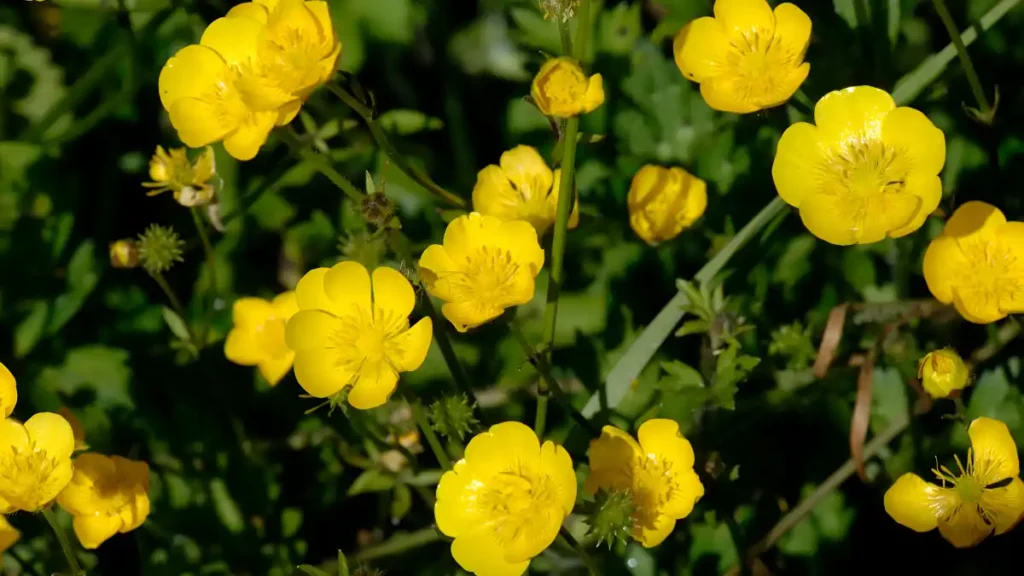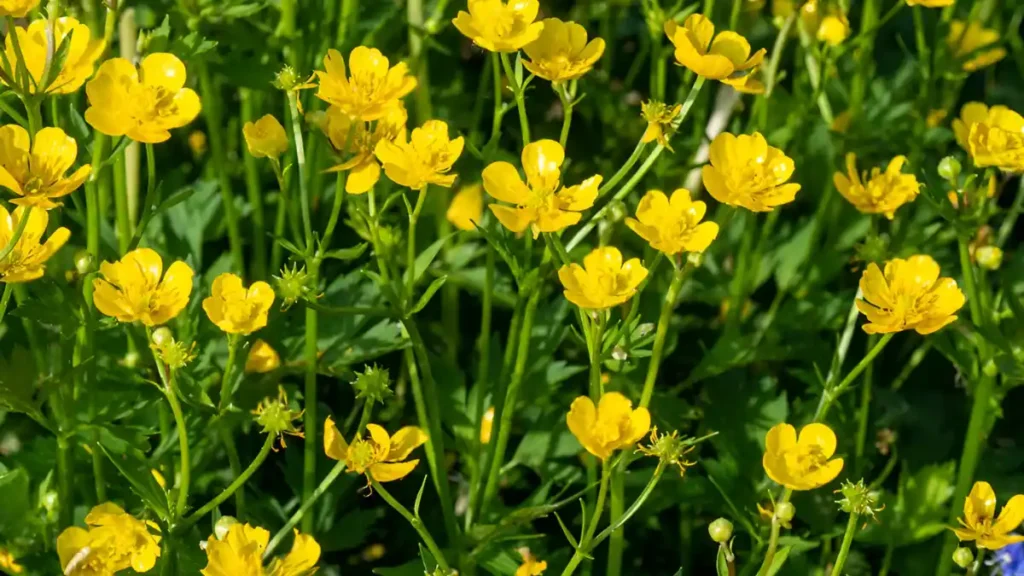A common invasive species on Vancouver Island is buttercup, sometimes known as “creeping buttercup,” it’s a wide group of blooming plants known for their bright, glossy yellow flowers. However, the buttercup has an insidious tendency and will sneakily implant itself into your landscape. It’s critical to manage These weeds in livestock regions because they can outcompete native flora and grow quickly in damp, well-drained soils. It takes a single buttercup plant a year to expand to an area of 40 square feet. Learn more about weed control tactics by reading the article below.
Learn how to get rid of buttercup weeds:
These weeds can regenerate from little bits of the leftover root, therefore it’s critical to be persistent and consistent when attempting to eradicate them. To eliminate undesired weeds, use these steps.
How do you kill buttercup weeds:
Physical extraction
- The weeds can be easily removed by pulling or digging them up. To stop regrowth, make sure to remove the complete root system. Due to the sap’s potential to irritate skin, use gloves. You can remove new, tiny buttercup plants by pulling them up by their roots. When the earth is moist and soft, this is simplest.
Spray of vinegar
- You can use acetic acid or white vinegar as a natural herbicide. Apply the equal parts vinegar and water mixture straight onto the weeds using a spray bottle. In mild infestations, hand plucking may be an option, but you will need to utilize a tool made to obtain all of the weed by getting rid of the deep roots.
Solarization
- Overheating weeds can be achieved by capturing the sun’s heat beneath a transparent plastic tarp or sheeting. Additionally, you can get rid of weeds without using chemicals by covering them with boiling water.
Mulching
- This weed development can be inhibited by applying a thick layer of mulch, which blocks light and stops seed germination. Herbs can be killed by direct heating of the leaves and roots using a propane torch or other hand-held flame source.
Utilizing herbicides
- Roughly chop buttercups to the dirt. Use a plastic sheet or opaque tarp to cover the area. It is imperative that the coating be impervious to light. You can apply choice herbicides straight to the leaves including triclopyr or dicamba. Take caution, as some substances may damage other plants. Always heed the instructions on labels.

Cultivating
- Plants that emit toxins, such as creeping thyme and marigolds, can help control these weeds. It can have their growth disrupted and prevented from blossoming and seeding by regular mowing or hoeing of the soil.
Buttercup removal expenses
- The size of the afflicted area, the method of removal, and the number of treatments necessary can all determine how much this weed removal will cost on your lawn or property. Remember that real expenses may differ from these approximate estimates. To get a more exact price, speak with a local weed control business or gardening expert.
Remedy for removing buttercup weeds
- We utilize environmentally safe remedies as needed to get rid of buttercups. After the therapy, the root system will wither away. There is no soil activity or discharge from our treatment, and it won’t hurt other plants. Additionally, wear protective clothes when working with the plants because the sap can cause severe skin irritation. At this point, there are no recognized biological controls to eradicate buttercup weeds. To avoid infestations of this weed, keep your lawn or garden healthy and dense by giving it enough water, fertilizer, and trimming.
Conclusion:
In conclusion, An abundant class of flowering plants that frequently overrun lawns, gardens, and farmlands are known as buttercup weeds. You may successfully manage and control these weeds in your outdoor places by knowing their traits, growth patterns, and removal techniques. To curb their proliferation and lessen their negative effects on the ecosystem, these weeds must be removed as soon as possible.
Certainly! If you’d like to learn more, please consider following our WhatsApp Channel: Harvest Gardening
A frequently asked questions:
Q1. What kills buttercup weeds easily?
A1. Herbicides containing glyphosate or 2,4-D are the most efficient technique for eradicating buttercup weeds. During this weed’s active growth season in spring and early summer, herbicide use is most effective.
Q2. What is creeping buttercup weed?
A2. The perennial weed known as creeping buttercup (Ranunculus repens) is distinguished by its vivid yellow flowers and creeping growth pattern. It spreads by seeds and stolons, frequently creating dense mats.
Q3. What makes Buttercup so aggressive?
A3. Due to her intense sense of justice and competitive nature, its frequently acts aggressively. It spreads underground with a fast-spreading stem system that constantly sprouts new plants and generates highly durable growth that re-sprouts after cutting.
Q4. How to kill buttercup weeds naturally?
A4. Buttercup weeds can be naturally eradicated by hand pulling them up, being careful to remove the entire root system, or smothering the area with a thick layer of newspaper or mulch to keep the sun off the plants.



